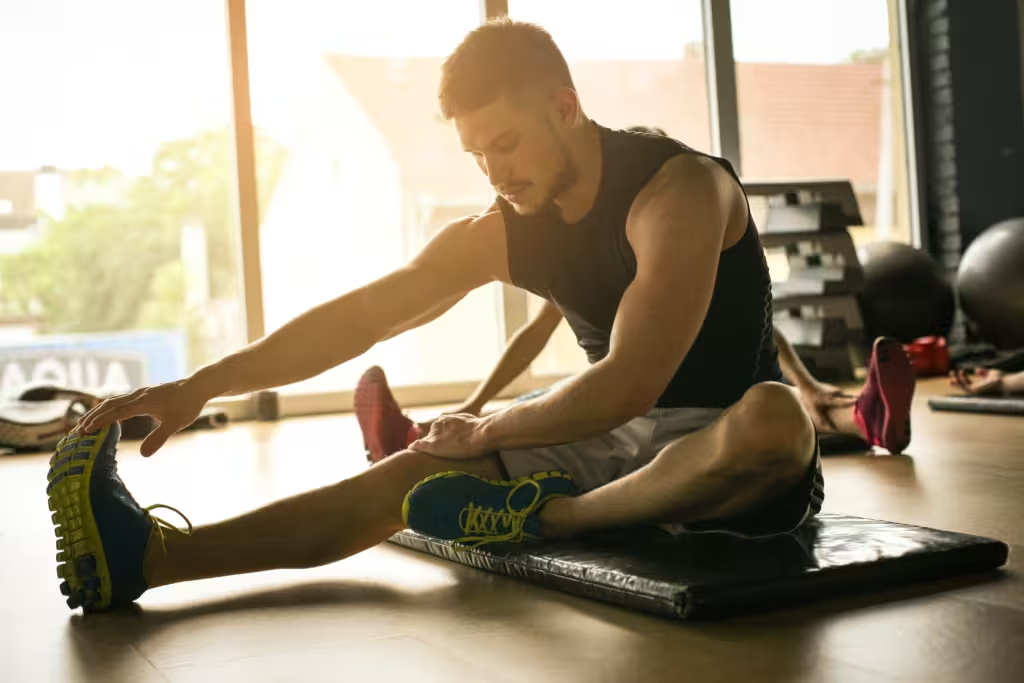Stretching enhances your life, but is often overlooked in daily routines. Whether you’re a child, adult, or senior, incorporating stretching into your lifestyle can significantly enhance your overall health and well-being. This blog post will delve into how stretching helps prevent injuries, aids in the healing process, and contributes to overall physical and mental wellness.
Stretching for Wellness and Better Health
Enhancing Flexibility and Range of Motion
Stretching helps to improve flexibility and range of motion, which are crucial for maintaining mobility, especially as we age. Regular stretching can make daily activities easier and more comfortable. Think about reaching for a high shelf or bending down to tie your shoes. These actions become smoother and less straining with improved.
Stretch to Prevent Injury
One of the most significant benefits of stretching is its role in injury prevention. By preparing your muscles for physical activity, stretching reduces the risk of strains and sprains. Before any workout or physical activity, dedicate 5-10 minutes to dynamic stretches, such as leg swings or arm circles, to warm up your muscles.
Stretch to Recover from Injuries
Stretching is not only preventive but also therapeutic. It helps in the recovery process by improving blood flow to injured areas, reducing stiffness, and promoting healing. After an injury, gentle stretching exercises prescribed by a physical therapist can help restore mobility and strength without causing further harm.
Stretch to Improve Mental Well-Being
Stretching isn’t just beneficial for the body; it also positively impacts mental health. It can reduce stress and tension, promote relaxation, and improve overall mood. Incorporate stretching into your morning or bedtime routine. Simple stretches like the child’s pose or cat-cow stretch can help calm the mind and prepare you for the day or a good night’s sleep.
Stretching Tips for All Ages
Children and Adolescents
For children and teenagers, stretching is vital as their bodies grow and develop. It helps improve coordination and balance, which are essential for sports and daily activities. Encourage kids to stretch after playing outside or during their sports practice to prevent injuries and enhance their performance.
Adults
Adults can benefit greatly from regular stretching, especially those with sedentary jobs. Stretching helps alleviate the muscle tension caused by prolonged sitting and reduces the risk of developing chronic pain. Set reminders to stretch every hour if you work at a desk. Simple stretches like neck rolls, shoulder shrugs, and hamstring stretches can make a big difference.
Seniors
For seniors, maintaining flexibility is crucial for independence and quality of life. Stretching can help reduce the risk of falls, improve balance, and keep joints healthy. Incorporate stretching into daily activities. Gentle yoga or tai chi classes designed for seniors are excellent ways to stay flexible and active.

Effective Stretching Techniques
Static Stretching
Static stretching involves holding a stretch for 15-60 seconds. This type of stretching is best performed after exercise when your muscles are warm. Hold each stretch without bouncing. Focus on breathing deeply and relaxing into the stretch.
Dymanic Stretching
Dynamic stretching involves moving parts of your body through a full range of motion. It’s ideal for warming up before physical activity. Leg swings, arm circles, and walking lunges are effective dynamic stretches that prepare your body for exercise.
PNF Stretching
Proprioceptive Neuromuscular Facilitation (PNF) stretching involves contracting and relaxing muscles with a partner’s help. This advanced technique can improve flexibility and is often used in rehabilitation settings. Always perform PNF stretching under the guidance of a licensed physical therapist to avoid injury.

Common Stretching Mistakes to Avoid
- Skipping the Warm-Up: Never stretch cold muscles. Always warm up with light aerobic activity, like walking or jogging, before stretching.
- Bouncing During Stretches: Bouncing can cause muscle tears. Hold each stretch steadily without any jerking movements.
- Overstretching: Listen to your body. Stretching should never be painful. Pushing too far can lead to injuries.
Incorporating stretching into your daily routine can lead to numerous health benefits, from preventing injuries to promoting mental well-being. It’s a simple yet effective way to enhance your quality of life at any age. Remember to stretch regularly, use proper techniques, and listen to your body to reap the full benefits of stretching.
For personalized stretching routines and injury recovery plans, don’t hesitate to reach out to our physical therapy office. Our experienced therapists are here to help you achieve your health and wellness goals.
